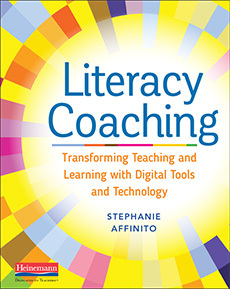Normally, when you hear the word ‘coaching cycle’, you might think of a classroom coaching cycle where teachers and coaches work together in the classroom to try new instructional practices, elevate current practices or even support specific students. The cycle begins with a pre-coaching conversation, continues with classroom observations, demonstrations and/or co-teaching and ends with a reflective discussion around shared learning. But sometimes, this kind of intense collaboration around classroom instruction might not be possible and a content cycle is called for instead.
So, what’s a content coaching cycle?
It’s an intense collaboration between a coach and a teacher around a shared topic, rather than classroom instruction. And while intense collaboration around shared topics with teachers is certainly not new, it is usually reserved for professional learning sessions, not coaching cycles. But content coaching cycles are a great way to connect and collaborate with individual teachers when coaching in the classroom is not possible or desired.
A content coaching cycle is the perfect way to launch a virtual coaching cycle when actually teaming up in the classroom is not physically possible due to remote learning or a hesitation to continue intense coaching work through online platforms. So, rather than delay classroom coaching, a content coaching cycle invites teachers to explore a topic together that meets their wishes and wants and often leads to more intense classroom coaching cycles later on. You might think of it as an initial coaching cycle that dives into content and then a later classroom coaching cycle supports application.
A content coaching cycle follows the same sequence of a classroom coaching cycle with just a few tweaks. The cycle begins with a conversation between the coach and teacher around a shared topic of exploration. What do we want to explore together? What do we need next to elevate instruction? What data do we have that supports that focus? This conversation around a vision for the partnership might be an email exchange, a virtual meeting, a Voxer conversation or even a phone call with the overall purpose to decide on a shared goal and offer ideas for how and when to learn together.
Then, it’s time for the actual coaching.
Based on shared goals, the coach and teacher venture on a shared learning experience to explore a topic together, but without working with students in the classroom. Here are a few possibilities that work particular well for virtual coaching cycles:
- Pair up for an article study on a selected topic.
- Journey through a blog hop to various blog posts and online resources to support learning on a chosen topic.
- Connect on a virtual think-tank session to plan for an upcoming unit of study.
- View instructional videos together with an eye on application toward the classroom.
- Enroll in a webinar around a topic of interest and debrief together, making plans for the classroom.
- Team up in an interactive virtual session to co-create resources for virtual instruction and remote learning.
You’ll notice some of these options work best for synchronous learning where coaching sessions can happen live and some work best for asynchronous, on-demand learning instead. The beauty of a content coaching cycle is that it can happen in multiple ways, in different forms and at the convenience of the educators working together.
Then, just as in a classroom coaching cycle, the coach and teacher meet for a debriefing session to discuss what they’ve learned together and how it might impact the classroom. What take-aways do we have from our time together? How might we apply that new learning to the classroom, especially the virtual classroom? What do we need next? In a traditional coaching cycle, this was usually a separate session after the collaboration in the classroom, but in a virtual content coaching cycle, this might happen immediately or be woven through the learning experience together instead.
While content coaching cycles can never replace classroom coaching cycles, they offer new opportunities to partner together around shared teacher learning and can be an important first step to deeper, more intense collaboration in the classroom, either in-person or virtually.

Stephanie Affinito is a literacy teacher educator in the Department of Literacy Teaching and Learning at the University at Albany in New York. She has a deep love of literacy coaching and supporting teachers’ learning through technology. Stephanie creates spaces for authentic teacher learning that build expertise, spark professional curiosity and foster intentional reflection to re-imagine teaching and learning for students. She recently published a book with Heinemann Publishing titled, Literacy Coaching: Teaching and Learning with Digital Tools and Technology. She presents regularly at state and national conferences on literacy coaching, teacher collaboration and supporting teachers’ reading, writing and learning through innovative technology.






